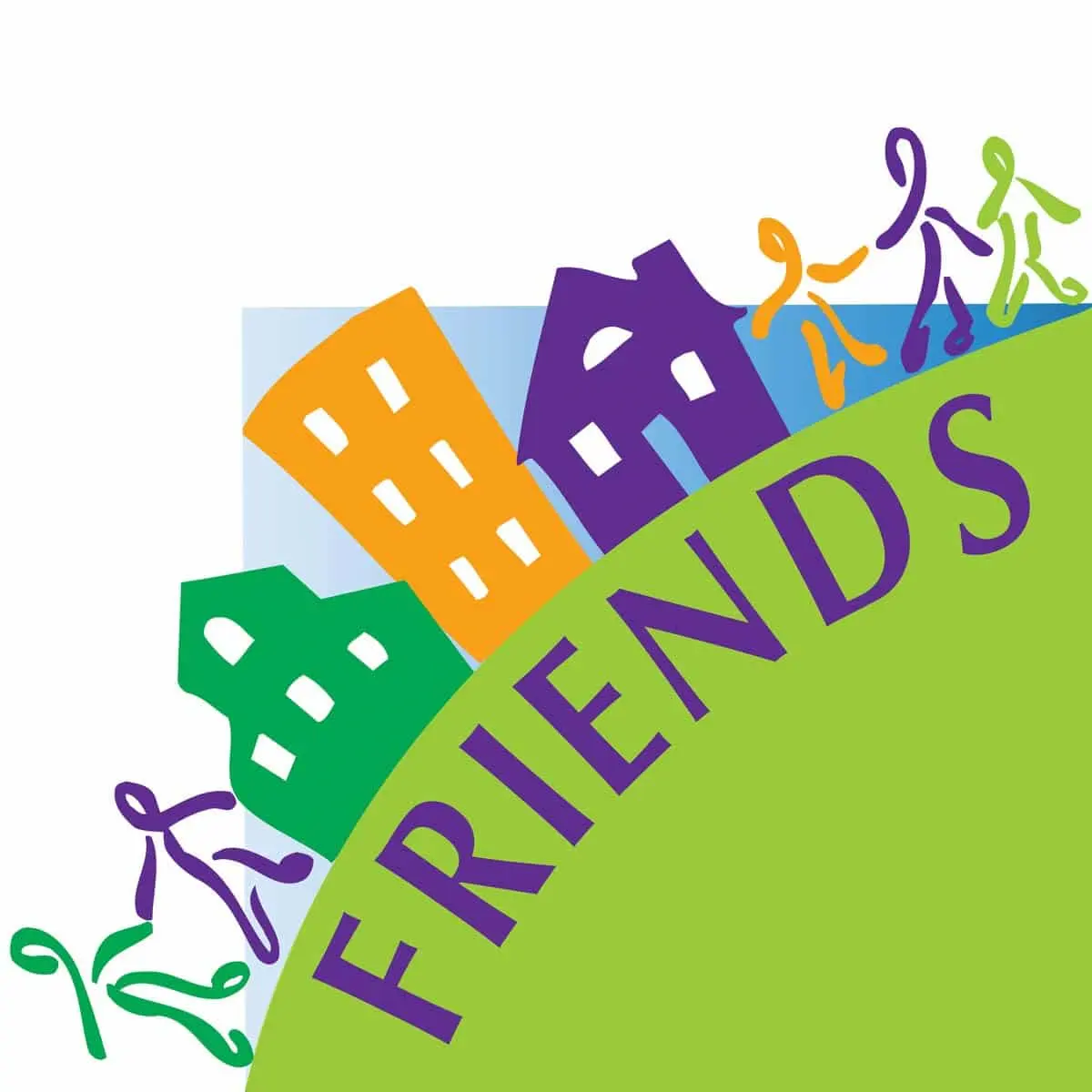Neglect Toolkit
Using This Toolkit
The purpose of this toolkit is to assist CBCAP state lead agencies (SLAs) and their partners in understanding neglect and the complexity of this issue, as well as promising approaches and strategies to address it. More public awareness is necessary to strengthen prevention initiatives and better protect children from the harm that neglect can cause.
Each section includes information, specific examples, and links to resources. We hope you find this toolkit helpful to your work and look forward to your feedback, including suggestions and additions to make it more useful. If you have any questions or feedback, please feel free to admin@friendsnrc.org.

To understand neglect, it is important to first define it and then, learn how to identify it. Unfortunately, defining and identifying neglect are no easy tasks. Historically, there have been inconsistencies across policies, practice and research. But, because neglect is so pervasive and so frequently intertwined with and a product of the challenges families face, it is critical that CBCAP state lead agencies, their grantees and partners try to understand it and consider strategies to raise awareness of and prevent neglect in their states and communities.
- Defining Neglect
- Risk Factors
- Chronic Neglect
Defining Neglect:
Child Neglect is the most prevalent form of child maltreatment.

Federal law does not provide specific definitions for neglect. However, federal legislation that authorizes CBCAP – the Federal Child Abuse Prevention and Treatment Act (CAPTA) (42 U.S.C.A. § 5106g) as amended by the CAPTA Reauthorization Act of 2010 – does provide guidance to states in creating their own legal definitions.
However, it does include abuse and neglect together, as a set of acts or behaviors. At minimum, these include:
- “Any recent act or failure to act on the part of a parent or caretaker which results in death, serious physical or emotional harm, sexual abuse or exploitation”;
- “An act or failure to act which presents an imminent risk of serious harm.”
This definition of child abuse and neglect refers specifically to parents and other caregivers. A “child” under this definition generally means a person who is younger than age 18 or who is not an emancipated minor.
TIP
Check your own state statutes for definitions that have been created for child neglect or visit Child Welfare Information Gateway’s State Statutes Search page: https://www.childwelfare.gov/resources/states-territories-tribes/state-statutes/?rt=1381
The Children’s Trust Fund Alliance (Alliance), which works to prevent child maltreatment, has developed a practical, fact-based definition of neglect that is considered useful to practitioners and advocates:
“Child Neglect is a failure to meet children’s basic needs – whether the failure is the responsibility of parents, communities or society – and this void, places children in harm’s way.”
The value of the Alliance definition is that it points toward our collective responsibility for child neglect, and away from blaming parents for problems not of their making.
Family issues such as poverty, mental health, homelessness, domestic violence and stress can limit parental capacity and contribute significantly to a child being neglected. Neglect often occurs without intent to harm.
Neglect can be characterized as occurring in different, but often overlapping domains. These include:
- Physical
(e.g., failure to provide necessary food or shelter, or lack of appropriate supervision) - Medical
(e.g., failure to provide necessary medical or mental health treatment) - Educational
(e.g., failure to educate a child or attend to special education needs) - Emotional
(e.g., inattention to a child’s emotional needs, failure to provide psychological care, or permitting the child to use alcohol or other drugs)
While this list may suggest that neglect is easily observable, this is not necessarily true. In reality, neglect can be hard to identify.
TIP
For more information on defining and identifying neglect, see Child Welfare Information Gateway’s, Child Neglect: A Guide for Prevention, Assessment and Intervention.
1 Summary p. x, Child Maltreatment 2019, Children’s Bureau, Administration on Children, Youth and Families, Administration for Children and Families, U.S. Department of Health and Human Services. http://www.acf.hhs.gov/programs/cb/research-data-technology/statistics-research/child-maltreatment.
As a CBCAP state lead agency, it is your responsibility to support programs and activities for the prevention of child abuse and neglect. Given the limited funding available, it is critical to assess, identify and inventory the current unmet needs of the state. By focusing on these risk factors, it will provide a way to prioritize your efforts to address neglect.

There are many factors that increase the risk for child neglect. These include:
- Poverty/Low Socio-Economic Status/Insufficient Resources – While being poor does not by itself predict neglect, research has shown certain types of socio-economic disadvantage to be associated with it. These include families experiencing multiple periods of homelessness, welfare dependency, and limited incomes, especially when these realities combine with low levels of parental education, the absence of supportive parenting partners, and a parent’s challenges with self-regulation (sometimes brought on by the overwhelming stress of poverty itself).It’s important to note that most people in poverty do NOT maltreat their children. In 2012, approximately 22 percent of children in the U.S. lived in poverty—yet less than one percent (9.2 of every 1,000 children) were involved with child protective services (CPS). (Source: U.S. Census Bureau 2013 and NCANDS 2012)
Tip
For more information on understanding the causes and consequences of U.S. poverty and inequality. Visit the Institute for Research on Poverty.
- Substance Use Disorders – Data show that children whose parents misuse drugs or alcohol are four times more likely to be neglected compared to families without parental substance use or misuse.
- Mental Health Disorders – Serious parental mental health disorders can be associated with child neglect, especially when they are unaddressed or untreated. In particular, maternal depression, including post-partum depression, can impact the mother’s capacity to meet her child’s needs, putting the child at increased risk, with the youngest children most at risk.
Tip
For more information on resources and collaborating with substance abuse, mental health and domestic violence partners, see the FRIENDS brief, The Power of Collaboration.
- Domestic Violence (also known as Intimate Partner Violence) – While there are limits to the data, the evidence confirms that domestic violence is associated with neglect. The risk of neglect is increased when a parent/caregiver’s capacities are compromised due to the ongoing abuse they experience and efforts of the batterer/abuser to control the victim. In addition to physical violence, victims of domestic violence experience other forms of abuse, such as emotional, mental, financial and other abuse that compromise their ability to provide for their children’s needs, putting them at increased risk of being neglected. The demands of parenting can be overwhelming to an abused parent suffering from trauma, damaged self-confidence, and other emotional effects of experiencing interpersonal violence. Violence in the home can have traumatic effects on children.
- Other risk factors significantly associated with child neglect include the parent’s history of trauma and/or abuse, social isolation and devaluing/minimizing the challenges associated with raising children. Parental incarceration is also considered a risk for neglect. Kristin Turney, in her article, Parental Incarceration and Childhood Health, discusses the impact of parental incarceration and how it separates parents from households, increases economic insecurity, strains parental relationships, impedes parental health and increases parental neglect, all of which may increase health problems in children. Some of the common factors or characteristics in families where neglect is present are:
- a chaotic, unpredictable, and disorganized family life
- low social cohesion and fewer positive interactions
- fewer actual or perceived social supports and social isolation
- long-standing isolation
- lack of life skill
- limited nurturing capacity
- perceived powerlessness, and
- exposure to violence and crime.
Tip
For a more comprehensive discussion of these risk factors, including research references, see The Children’s Trust Fund Alliance fact sheet “Child Neglect: The Basics and Beyond (Longer Detailed Version).”
Occasional or situational neglect of children needs to be distinguished from neglect that is severe and ongoing, or ‘chronic.’

In a bulletin for professionals on Chronic Child Neglect, the Child Welfare Information Gateway characterizes chronic neglect as occurring when one or more needs basic to a child’s healthy development are not being met by a parent or caregiver on a recurring or enduring basis.
Chronic neglect can also be understood as the experience of growing up in chronic adversity – living in an environment laden with traumatic events that lacks access to resources, including adequate adult supervision and support.
Long-standing and severe neglect can have serious, long-term consequences for children and impact the development of important self-regulation skills in children. The Center on the Developing Child at Harvard notes chronic neglect as being a major contributor to toxic stress.
“Severe neglect appears to be at least as great a threat to health and development as physical abuse—possibly even greater.”
– Harvard University Center on the Developing Child
Research shows that this kind of prolonged activation of the body’s stress response systems can disrupt the development of brain architecture and other organ systems. These disruptions precipitated by chronic neglect (and/or other sources of toxic stress) can produce damaging effects on learning, behavior, and health across the lifespan.
Living with the toxic stress produced by chronic neglect or adversity links to trauma symptoms that can impact early brain development and later cognitive development and emotional regulation. Long term impacts can include increased risk for stress-related disease and cognitive impairment well into adulthood. For more information in this area, click here.
Tip
See the Child Welfare Information Gateway’s “Understanding the Effects of Maltreatment on Brain Development” for a full discussion of this important topic.
Two other developing bodies of knowledge are important to understanding chronic neglect:
- One is the Adverse Childhood Experiences (ACEs) research, which, among other findings, documents how the accumulation of ACEs in parents/caregivers can negatively impact their parenting; see the FRIENDS ACEs webpage or the website of the Centers for Disease Control and Prevention for an overview of the topic. The CDC pages include links to its Essentials for Childhood initiative aimed at addressing the broad range of health and developmental problems associated with toxic stress.
- Another is research on the frequency of the Intergenerational Transmission (IGT) of child neglect. For a discussion of the research behind the IGT of neglect and reforms needed to address it, see the article Intergenerational Patterns of Child Maltreatment: What the Evidence Shows.
On Trauma
Because trauma is so frequently a product of the experience of living with chronic neglect/adversity and other forms of abuse and neglect, it is important that CBCAP grantees maintain a trauma-informed perspective on their work.
Early child abuse and neglect can result in lifelong cognitive, behavioral, and mental health problems. Traumatized children and youth may need help overcoming learning difficulties and social-emotional deficits. Find out how to help these vulnerable children and youth with Child Welfare Information Gateway’s Supporting Brain Development in Traumatized Children and Youth.
The National Child Traumatic Stress Network (NCTSN) provides a wealth of resources on trauma, from the basics (e.g., “What it is” and “Why it matters”) to highly specialized topics such as addressing the needs of those who have experienced terrorism or war.
NCTSN also hosts a registry, Empirically Supportive Treatments and Promising Practices, that details programs and interventions scientifically endorsed for dealing with trauma. This registry includes interventions specific to the prevention and treatment of neglect. Among these are:
- Trauma Adapted Family Connections (TA-FC), a neglect prevention intervention for children and youth from 0-18. TA-FC puts significant attention on the daily stressors and crises related to the environmental contexts as well as to family histories that include complex developmental trauma.
- Attachment and Bio-behavioral Catch-up (ABC) ABC is an early intervention program aimed at the needs of neglected children aged birth through 24 months from low-income families.
In addition, when working with American Indian or Alaskan Native populations it’s important to consider the impact of historical trauma. FRIENDS has resources related to working with Tribes and Tribal Governments and this important topic.
CBCAP state lead agency efforts to address child neglect should be approached using the basic promotive and preventive approach that informs its other efforts.
This means thinking about these foundational elements and frameworks of effective prevention. In this section, learn more about:
- The Social-Ecological Model
- Protective Factors and Neglect
- Effective Strategies
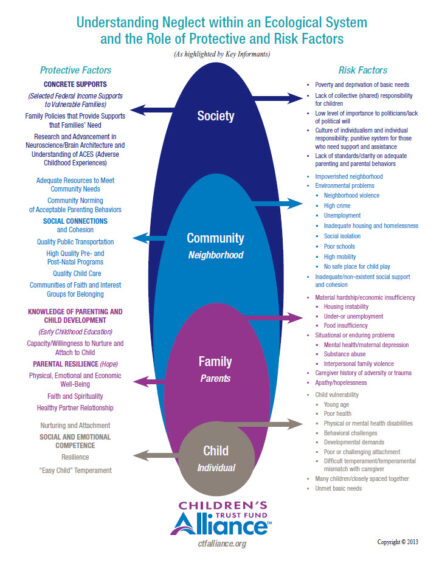
The social-ecological model considers four levels –individual, relationship, community, and societal.
The Children’s Trust Fund Alliance has created an infographic that identifies the protective and risk factors that impact child neglect. These factors are associated with one or more of the four levels of the socio-ecological system – the child/individual, family/relationship, community/neighborhood, and society levels.
As noted by the CDC, this model considers the complex interplay between factors at each level as well as the full range of factors that put children at risk for neglect and other forms of maltreatment. It also suggests that efforts must be made at each level to protect children. The overlapping rings in the model illustrate how factors at one level influence factors at another level.
The social-ecological model should be foundational to the work of CBCAP state lead agencies, as it points to the need for child neglect prevention strategies targeting each of these levels to build safe and healthy children and families and strong, supportive communities.
Consistent with a social-ecological approach, effective child neglect prevention strategies include evidence-based or -informed practices, programs, public awareness, policies, economic development, and support for basic needs. This type of comprehensive approach to neglect prevention ensures impact at each level of the social ecology: individual, family, community, and society. This approach is more likely to sustain prevention efforts over time than any single intervention.
Protective factors are attributes and conditions that research shows help to keep all families strong and on a pathway of healthy development and well-being. Working to promote protective factors at all levels of the social ecology – not just seeking to minimize specific risk factors – is at the heart of child neglect prevention.
This Protective Factors Infographic provides a reminder about how each of the protective factors applies to neglect.
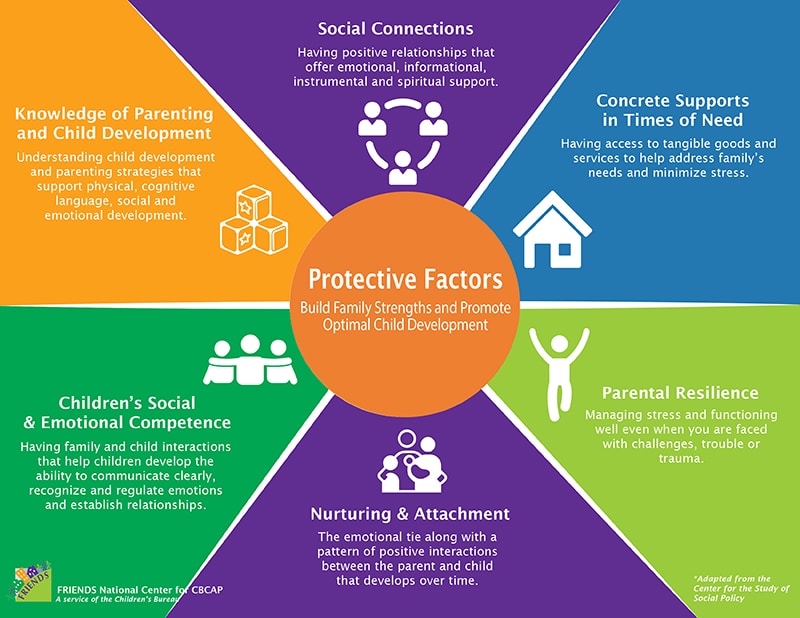
To download the FRIENDS Protective Factor Infographic click here.
TIP
See the Protective Factors section on FRIENDSNRC.org for additional information on this important topic.
There are a number of other resources helpful to understanding the concept of protective factors and how they apply to child neglect:
- The Child Welfare Information Gateway
The Child Welfare Information Gateway is a good source of information about protective factors; see their webpage “Protective Factors to Promote Well-Being” for a wealth of information. - The Child Welfare Capacity Building Collaborative
The Child Welfare Capacity Building Collaborative’s Center for States has developed the infographic, Protective Factors and Protective Capacities: Common Ground for Protecting Children and Strengthening Families. The Center for States provides resources for improving the front end of the child welfare system – a frequent meeting ground for prevention and child welfare. - Center for the Study of Social Policy
For a deep dive into the research behind protective factors, see the Center for Social Policy’s “The Strengthening Families Approach and Protective Factors Framework: Branching Out and Reaching Deeper”.
Research has identified various broad programmatic strategies that may work well in strengthening families and preventing child neglect. Among these are: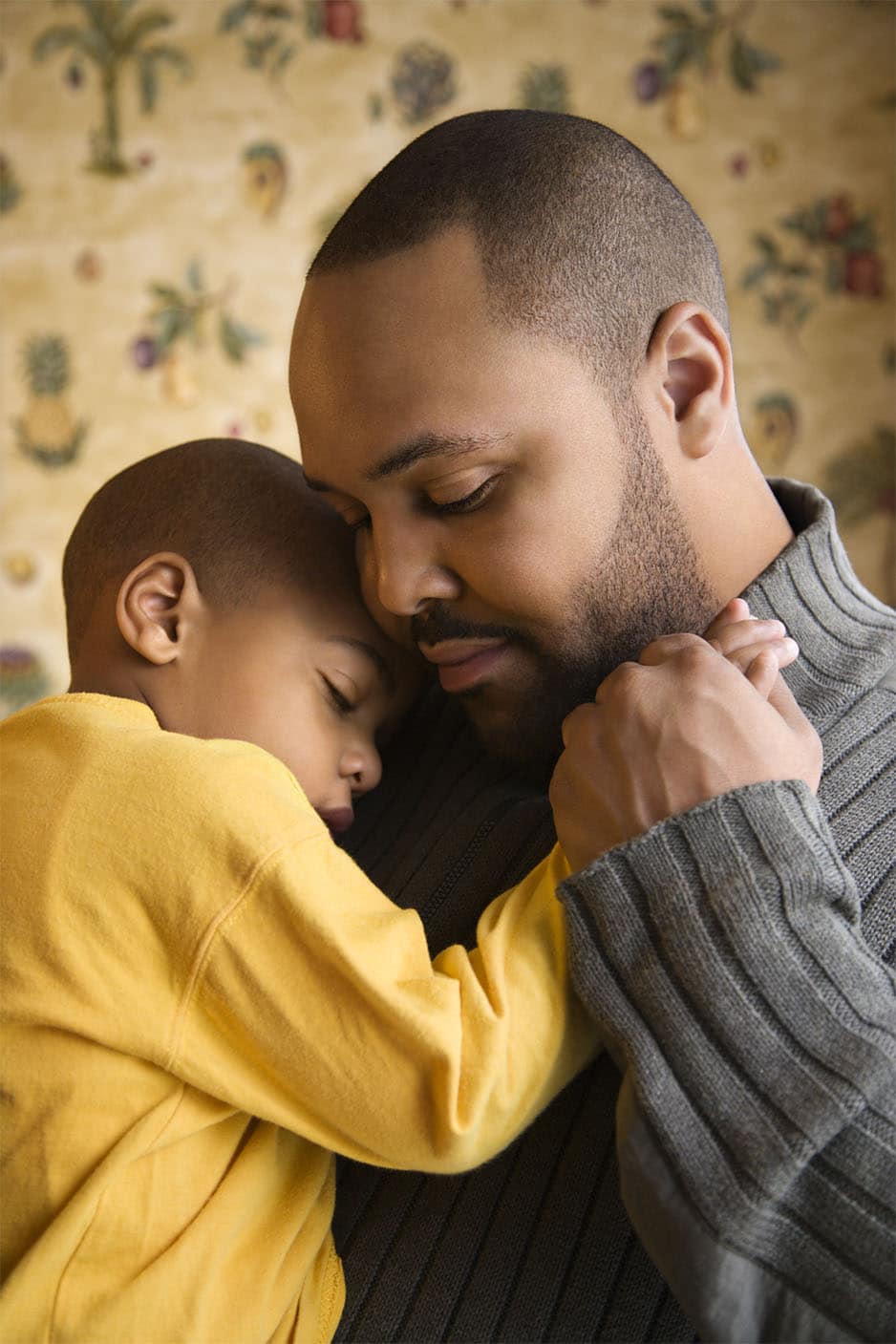
- Home visiting
- Attachment-based interventions
- Early childhood programs
- Family strengthening initiatives
- Community initiatives
- Initiatives that provide economic support interventions
- Strategies that help families build and increase protective factors
This is not an exhaustive list and includes strategies that address abuse as well as neglect.
Specific approaches and practices incorporated into these strategies increase their effectiveness. Among these ‘best practices’ developed from working with families with chronic neglect are:
- Understanding that families who experience neglect are typically dealing with multiple significant stressors
- Engaging families through quality relationships, trust, a belief that the family is more than the problem, and an understanding of the family’s point of view and the effort it takes to change
- Screening for chronicity with valid tools and doing assessments that capture the strengths and assets of families that can be leveraged to address risks as well as the underlying issues
- Tailoring interventions to support achievement of the family’s goals and offering services delivered at each family’s capacity and functioning level
- Offering skill building opportunities that enhance life skills, problem solving, parenting, relationships, etc.
- Helping with basic needs (i.e. housing, transportation) and strengthening support networks
- Using longer-term interventions that offer ongoing support
- Engaging in collaborative approaches to delivering services to address multiple/complex needs.
Research also indicates that, for direct service programs, smaller caseloads, solution-focused clinical supervision, and practitioners’ communication skills may also be essential to successful implementation of neglect prevention services. For more information on evidence-based models that might address areas of neglect prevention, visit Effective Neglect Prevention Programs in this toolkit.
And, as is most often the case with prevention, the research shows that the earlier parents and children get support, the better the outcomes.
Putting Prevention Thinking to Work
Here are some examples of what the literature says about effective child neglect prevention and how each strategy relates to protective factors and the social-ecology. These examples illustrate a way to put social-ecological and protective factors thinking into practice.
As noted in the discussion of the Social Ecological Model, an approach that targets more than one level of the social ecology and that supports increases in more than one protective factor is more likely to be effective and sustainable over time than any single intervention.
| STRATEGY | PROTECTIVE FACTOR | SOCIAL ECOLOGY LEVEL |
|---|---|---|
| Strengthen economic supports to families – Improving housing opportunities and household financial security – Family-friendly work policies | Concrete Support in Times of Need | Community Societal |
| Enhance parenting skills to promote healthy child development: – Early childhood home visitation – Parenting skills and family relationship approaches | Parental Resilience Nurturing & Attachment Knowledge of Parenting and Child Development Social and Emotional Competence of Children | Individual Relationship |
| Change social norms to support parents and positive parenting – Public engagement and education campaigns – Legislative policies to support parents and positive parenting initiatives | Knowledge of Parenting and Child Development Social and Emotional Competence of Children | Community Societal |
| Provide quality care and education early in life – Preschool enrichment with family engagement – Improved quality of child care through licensing and accreditation – Legislative approaches/policies to support quality early care and education | Knowledge of Parenting and Child Development Social Connections Social and Emotional Competence of Children | Individual Relationahip Community Societal |
CBCAB state lead agencies can play a leading role in tackling the prevalence of child neglect.
The needs assessment process required as part of the CBCAP program is a good place to start when making well-informed strategic decisions. Given the long-standing reality of the far greater incidence of neglect verses abuse, a needs assessment that considers the factors that contribute to neglect should encourage state lead agencies to consider adopting a neglect-prevention focus in their efforts.
One primary way state lead agencies can advance neglect prevention is by funding and supporting community-based neglect prevention programs.
The broad strategies indicated by research as effective against neglect – e.g. home visiting, attachment-based interventions, early childhood programs – serve to point state lead agencies in the right direction, but much more information is needed to determine the right programmatic choice.
FRIENDS, offers a tool to assist in the choice of effective neglect prevention programs. In this section of the toolkit, learn about using the FRIENDS Crosswalk of Evidence-based Programs to identify effective programs. Also, refer to the Effective Strategies tab under Preventing Neglect for more information on the types of programming that might address neglect.
Using the FRIENDS Crosswalk of Evidence-Based Programs
Some of the evidence-based and evidence-informed programs addressing child neglect can be found in the FRIENDS Crosswalk of Evidence-Based Programs which includes rankings from seven different registries of evidence-based and evidence-informed programs.
Only a very limited number of prevention programs targeting child neglect have been shown by research to be effective. A few programs in the FRIENDS Crosswalk of Evidence-Based Programs are identified as reducing the risk of child neglect. These include: SafeCare,® Family Connections, the Step-By-Step Parenting Program, and Parents Anonymous®.
One community-wide initiative with evidence of effectiveness is Strong Communities for Children.
The FRIENDS Crosswalk of Evidence-Based Programs is an easily utilized tool designed to assist SLAs and their grantees in making strategic choices that best fit the conditions illuminated by their needs assessments. When using the tool, SLAs may want to consider how combining evidence-based and evidence-informed programs may leverage even greater impact, as illustrated by the following example from South Carolina.
Example: A Multi-Program Strategy
South Carolina’s efforts represent an example of how CBCAP state lead agencies are working towards creating a continuum of strategies to prevent neglect.
Through CBCAP funding, the South Carolina SLA is building a network of Family Resource Centers (FRCs) to provide concrete supports for families to prevent neglect. Additionally, through private foundation, state, and federal funding, the South Carolina SLA supports an array of evidence-based parenting and home visiting programs as a part of their neglect prevention efforts. Together these efforts provide a continuum of multi-generational support to meet the needs of families.
Through private foundation funding, the South Carolina SLA is working toward full implementation of the well-supported Triple P (Positive Parenting Program) in three South Carolina counties. Triple P is a system of evidence-based education and support for parents and caregivers of children and adolescents. The Triple P system uses a flexible multi-level framework that tailors information, advice, and professional support to the needs, culture, and community challenges of individual families. Triple P includes a strong focus on addressing participants’ unmet needs for concrete support, a key risk factor for neglect. Connecticut, Louisiana, and Nevada are other states that have invested CBCAP funding in Triple P.
South Carolina sees its support of the Strengthening Families Program (SFP), a universal, primary prevention family skills training program, as another part of its neglect prevention efforts. SFP, considered well-supported by research evidence, has been found to significantly improve parenting skills and family relationships while reducing problem behaviors and other negative child outcomes. The South Carolina SLA partners with non-profits across the state to offer the family skills training program, which is delivered in 14 two-and-a-half-hour sessions. The South Carolina CBCAP state lead agency provides coaching to ensure that SFP is being delivered by its nonprofit partners with fidelity to the proven model.
South Carolina sees these efforts as complementary to the neglect prevention effects of its investment in evidence-based and -informed home visiting programs, which include family health and economic self-sufficiency outcomes.
Early childhood home visiting programs serve families during the first years of a child’s life, often beginning prenatally. Multiple models focus on improving an array of outcomes, which include maternal and child health, developmental screening and surveillance, school readiness, prevention of child abuse, neglect, and injury, and connection to concrete supports and coordination with additional resources. Families are served for a period of a few years, meeting with a support professional in their home at a frequency depending on their needs and the model utilized. The South Carolina SLA partners with 16 implementing agencies across the state to deliver direct services, as well as coordinates efforts with stakeholders at the state level to improve outcomes across different funding sources and program models.
In considering their role as a state leader in neglect prevention, CBCAP state lead agencies may choose to go beyond programs. As indicated by the research about ‘what works’ to prevent neglect, strategies that seek change at the community and societal levels of the social ecology may work well in strengthening families and preventing child neglect. Two such identified strategies include initiatives that provide economic support interventions and broad-based community initiatives. Certain public policy initiatives also offer fertile ground for state lead agencies to exercise their focus and impact on neglect prevention.
In this section, learn about:
- Leveraging Public Systems to Prevent Neglect
- Promising/Emerging Multi-System Efforts
Because of the risks closely associated with neglect, such as substance use disorders, mental health conditions, domestic violence and especially, extreme poverty, neglect prevention is often well served by being woven into other public systems.
The CBCAP program instruction states, “The most effective way to strengthen families and prevent child abuse and neglect is for all family support, prevention and treatment programs, public and private, to work together in partnership with families and other disciplines such as social services, physical health and mental health, substance abuse treatment services, domestic violence, child care, early childhood, education, law enforcement, and other relevant groups in the community to achieve their common goals.”
Public Systems
Public agencies must focus on prevention and early intervention and on developing partnerships with other community and informal support systems to promote effective prevention strategies for neglect. Roles and responsibilities of all service providers must be discussed and adjusted to ensure the goals and objectives are achievable and that children are safe.
These partners may include:
- physical health and behavioral health,
- early childhood education and education,
- economic aid/poverty reduction,
- housing/homelessness,
- workforce development,
- financial literacy, and
- domestic violence
As stated in the CBCAP Program Instruction, lead agencies are strongly encouraged to find ways to partner with other public and private organizations serving the same populations and sharing the same goals and objectives. States are encouraged to build upon existing interagency collaboratives with similar goals as CBCAP. Each offer fruitful grounds for potential partnerships aimed at child neglect prevention.
Tip
For information on collaborating with substance use, mental health and domestic violence partners, see the FRIENDS and The Children’s Trust Fund Alliance brief, The Power of Collaboration in Preventing Child Neglect, Partnering with Substance Abuse, Mental Health and Domestic Violence Systems.
Additional Resources
National Resource Center for Healthy Marriage and Families offers free resources for service providers looking to form partnerships here.
The Centers for Disease Control provides information on strategies for preventing child abuse and neglect here, along with their technical package called Preventing Child Abuse and Neglect: A Technical Package for Policy, Norm, and Programmatic Activities.
Community Initiatives

One seminal work on effectively integrating broad-based community initiatives is the Pathways Mapping Initiative, which put together what is known from research and from the experiences of high-quality, results-oriented, initiatives and systems for strengthening efforts to improve community outcomes for children and their families. The initiative included the publication of a guide specific to integrating child maltreatment prevention into such initiatives, the Pathway to the Prevention of Child Abuse and Neglect.
As outlined in this document, examples of the types of widely endorsed public policy child-related goals (outcomes) that can serve as common ground for public sector partnerships include:
Children and Youth:
- Children and youth are safe
- Children develop the cognitive and socio-emotional capacities needed to become self-sufficient adults
- Children experience a reasonable level of mental health.
Family:
- Strong, connected families
- Families have knowledge of child development and skill in parenting
- Families have basic supports families and ready access to needed services
- Families are free from substance use/misuse and mental illness
Community:
- Communities are caring and responsive
- Community environments support healthy child development and family functioning.
In recent years, there has been an upsurge in public sector initiatives that include a focus on outcomes related to child neglect prevention. Examples of initiatives that CBCAP programs can connect to further their neglect prevention goals include Inter-generational approaches and Differential/Alternative Response systems.
Inter-generational Approaches
Inter-generational approaches focus on creating opportunities for and addressing needs of both vulnerable parents and their children. These are sometimes referred to as “Two-Gen” or 2Gen approaches.
Two-generational (Two-Gen) approaches are defined as one which expands the lens to evaluate more than each generations resource and service needs, and intentionally focuses on the innate interdependence of family members – especially parent and child, but also partners, co-partners, siblings, and others who define themselves as “family”.
Two-Gen approaches seek to deal with the inter-generational impacts of poverty on the outcomes level and focus on creating opportunities for and addressing needs of both vulnerable parents and their children. It actively involves parents in the outcomes level service connections and goal-setting for their children and involves children in the same way for parents. It facilitates inner-self level skills and mind-set focused coaching for all family members, and family level alignment around shared goals.
Two-Gen practices hold promise for better outcomes for vulnerable families. As data supports, the efforts to reduce stress and provide support to young children, through two-generation interventions, can reverse the biological effects and behaviors associate with them.
TIP
More information about Inter-generational approaches can be found at Annie E. Casey Foundation and Aspen Institute.
Differential or Alternative Response
As defined by the Child Welfare Information Gateway, Differential or Alternative Response is “a system reform that enables child protective services (CPS) to differentiate its response to reports of child abuse and neglect based on several factors. The CPS system selects the initial response (investigation or assessment) based on several factors. Differential response is an area of CPS reform also referred to as dual track, multiple track, or alternative response.” A state’s Differential or Alternative Response system may bolster service provision to those at risk because of the additional supports offered. These supports, such as assistance in meeting basic needs, address a critical risk factor for neglect.
TIP
More information about Differential or Alternative Response is readily available by searching these terms in the Child Welfare Information Gateway library.
Understanding the prevalence and negative impact of neglect on children, CBCAP state lead agencies have launched new initiatives aimed at neglect prevention that build on other public systems.
CBCAP programs in these states provide examples of promising multi-system initiatives:
Colorado Community Response
Colorado Community Response (CCR) is a voluntary prevention program working with families who have been reported to county child protective services (CPS) for suspected child abuse or neglect but screened out as not meeting the statutory criteria requiring further assessment or screened-in and assessed but closed without the provision of child welfare services. To be eligible for services, families must be referred by a local County Human Services Child Welfare Department as a screened-out referral or closed assessment.
The CCR program seeks to prevent child neglect and strengthen family functioning by providing access to needed concrete services and enhancing support networks to meet their needs. The program was developed around the Strengthening Families Protective Framework, a research-based and cost-effective framework developed by the Center for the Study of Social Policy (CSSP) to increase family strengths, enhance child development, and reduce child maltreatment.
Families participating in the program work with a CCR Family Navigator to identify strengths and areas of need and begin developing family-led goals. Goals focus on opportunities to increase family functioning with an emphasis on financial well-being. All program efforts are geared toward stabilizing the family so that risk factors are reduced, and protective factors enhanced.
An evaluation of the program showed that families completing CCR are enhancing protective factors and improving family functioning building social capital, increasing stability, improving family functioning and self-reliance, and receiving concrete supports. Child welfare re-involvement, as measured by subsequent founded assessment and out-of-home placement, was also lower for CCR completers than families with similar demographics. Evaluation findings showed that CCR is an effective program for strengthening families and preventing child welfare re-involvement.
For more information on Colorado Community Response, CCR Information.
TIP
Interested in learning more about the CCR evaluation? An overview of the evaluation findings is available here.
Wisconsin Community Response Program
Wisconsin’s Community Response Program (CRP) was created in 2006 to fill a gap in the state’s child maltreatment prevention continuum. A primary focus of CRP is to assist families with economic stressors; the overall goal is to strengthen families, prevent child abuse and neglect, and reduce re-referrals to CPS. CRP is a short-term (20-week maximum) voluntary prevention program that includes case management, home visits, collaborative goal setting, comprehensive assessment, and flexible funds.
The CRP’s target population includes families who were the subject of reports that were “screened out” (did not to warrant further assessment) and families whose report was “screened in” for further assessment but closed due to a finding that the reported allegation could not be substantiated.
The CRP, a strengths-based practice, was designed to explicitly respond to ecological systems theory (the social-ecological model) and the protective factors framework. Distinctive features of the program include a comprehensive assessment process and connection to evidence-based services based on the individual needs of the families. CRP staff are expected to know about the evidence-base for each of the community services to which program participants are referred, and to take care to make sure referrals are aligned with participants stated and changing needs.
The CRP’s development was informed by the findings on a prior research initiative, Project GAIN (Gaining Access to Income Now). Project GAIN was designed to answer the critical policy question: “How much maltreatment prevention can be achieved by intervening with at-risk families around economic stressors?” The financial components now central to CRP were added following the conclusion of Project GAIN. Wisconsin is currently conducting a randomized control trial on CRP. We will continue to post the articles on our website as they become available: https://preventionboard.wi.gov/Pages/OurWork/CommunityResponse.aspx
TIP
A short video on the history of the CRP, program components, practice framework, and the intended outcomes of CRP is available here.
Connecticut Family School Connection
The Connecticut Family School Connection (FSC) was a program that provided voluntary, intensive home visiting services to families whose children were frequently tardy or truant from school.
The program was offered to families with children in grades K-8 in multiple cities. Referrals to the program could be initiated by a principal, social worker, teacher, family resource aide, psychologist and any other designated school staff person.
FSC sites typically offered an array of services to families, including parent education, supports for parent-school connections, adult education and English as a second language services, and case management. The evidence-based Triple P (Positive Parenting Program) was also integrated into some service menus. Connecticut used CBCAP funds to help support the program, which has since ended due to state budget cuts.
Other Promising Efforts
In addition to the major multi-system initiatives and programs addressing child neglect, many CBCAP state lead agencies are supporting or implementing specific, focused efforts that leverage other public systems. Given the strong link between poverty and neglect, a key area for CBCAP cross-sector work is financial literacy and asset development/poverty reduction work.
Financial Literacy/Economic Supports
One strategy some CBCAP programs are implementing is partnering around the provision of Financial Literacy/Economic Supports. These can include adult education classes and employability programs offered to parents, as well as the integration of teaching and coaching on financial literacy to home visiting programs and at family support centers.
Tip
The National Resource Center for Healthy Marriage and Families offers resources on economic self-sufficiency, including asset building, financial management, housing, TANF and workforce development, click here to learn more.
Others collaborate with organizations offering matched savings accounts (called individual development accounts, or IDAs) and financial education. The Administration on Child and Families, Office of Community Services shares knowledge that has been developed through the Assets for Independence (AFI) program here.
Tip
Interested in learning more about Financial Stability, visit the FRIENDS Online Course on Financial Decision Making or see how Wisconsin approached prevention by focusing on reducing economic stressors in Project GAIN.
Social Capital

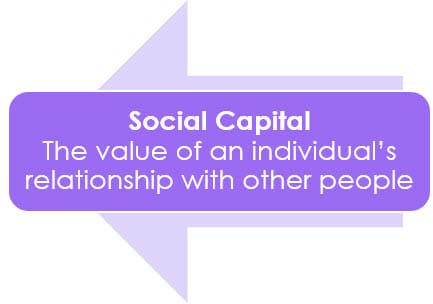
Another strategy being implemented is building Social Capital. Social capital is the formal and informal networks – of family, friends, neighbors, and institutions – through which people develop meaningful connections to build economic security. These networks and the skills to build them are important contributors to families’ well-being.
Social capital refers to the resources inherent within a person’s social network. These resources can include information, trust, and influence, individuals embedded within a social network have access to the resources within it and can leverage them to their advantage.
Social networks that are comprised of many people from a variety of different fields and backgrounds, particularly people of a higher socio-economic status, offer greater chances to learn new opportunities and resources that can be used to advance economically and get ahead.
Research indicates that organizations can be a source for helping individuals build social capital through opportunities for peer networking and assuming leadership roles, which may heighten motivation to persist in achieving education and employment goals (Sabol & Chase-Lansdale, 2014).
Social service organizations can help families living in poverty broaden their social networks by developing and fostering an institution-based network comprised of relationships with people associated with the institution such as classmates, staff members, colleagues and volunteers.
It is important to ensure families are well connected to a broad social network that offers both support and leverage to aide them in their goal of becoming economically self-sufficient.
Tip
Learn more about social capital by visiting University of Minnesota Extension or explore, the U.S. Partnership on Mobility from Poverty to discover a variety of approaches to help move families out of poverty. One of the building blocks explored is community building and social capital.
Al Condeluci talks about building social capital
in an 8-part YouTube video series.
Addressing neglect is challenging. It requires changes at the community and societal levels. It is even more difficult to bring attention to, since problems related to neglect are often seen as too difficult to solve, such as poverty, lack of quality childcare, or educational opportunities as well as, definitions are unclear.
Public perception and thinking about the causes of neglect and how to address it are limited. While tragic stories of physical or sexual abuse often receive publicity, neglect is often underpublicized.
The Frameworks Institute has done some work in this area related to early childhood and adversity. They have conducted research on framing strategies in hopes of engaging the public. For more information click here.
In addition, Frameworks Institute specifically addresses child neglect in two publications.
- Communicating Connections: Framing the Relationship Between Social Drivers, Early Adversity, and Child Neglect focuses on understanding and addressing “social drivers” in preventing child maltreatment.
- Attending to Neglect: Using Metaphors and Explanatory Chains to Reframe Child Neglect in the United Kingdom, conducted research on people’s understanding about child neglect and examine the role of Explanatory Metaphors and Explanatory Chains in reframing the public’s perception of child neglect.
How Communities Can Help Prevent Neglect?
Engaging the community is one key strategy in preventing child neglect. It is not an easy task, but the need to educate and empower everyone from parents to lawmakers and doctors on the importance of recognizing signs of neglect and understanding the needs of families is critical. Communities need to come together to support one another.
Prevent Child Abuse Iowa’s Connections Matters is an initiative designed to engage community members in building caring connections to improve well-being.
Community engagement is defined as individuals that come together that have a common set of goals, values, and work together to achieve those common goals.
Tip
The Community Tool Box (CTB) from the University of Kansas is developed and managed by the KU Center for Community Health and Development. The CTB addresses informal relationships in collaboration by engaging the community by first taking the time to understand the community through public forums, focus groups, needs assessment, and interviews, engaging others by connecting with other groups, enlisting respected community members, and creating activities, engaging volunteers and partners in strategic planning, engaging opponents and allies to find common ground and build upon strengths and engaging stakeholders in program evaluation. The Community Toolbox can be found here.
What we know:
Relationships Make the Difference
To prevent and tackle neglect, we need to support and nurture relationships. The most important relationship is between the child and their parents. Other relationships like those between practitioners and parents, and between local services, are also key. To find out more about building relationships, visit the FRIENDS Collaboration Toolkit section on Informal Relationships.
A Parent Perspective:
Download Beth’s Story to hear about one parent’s perspective of the importance of relationships in preventing neglect.
What can we do?
- Understand children’s needs (e.g. increase knowledge of child development and positive parenting skills)
- Recognize the signs of neglect and why it happens (e.g. know the signs of neglect and detect it early)
- Know how to help (e.g. promote the understanding of healthy child development and positive parenting skills and the promotion of help-seeking behavior for parenting difficulties)
- Feel supported (e.g. promote and foster a community of support for parents)
YOU Can Help!

The following resources were developed by the FRIENDS National Center in collaboration with The Children’s Trust Fund Alliance and the CBCAP Neglect Community of Practice.
- General Public – YOU Can Help Prevent Child Neglect in Your Community – This handout was designed to be used with the General Public to provide information on ways families can prevent child neglect. It can be customized for your own organization.
- Organizations/Agencies – Together We Can Do More – YOUR ORGANIZATION Can Help Prevent Child Neglect in Your Community addresses: – Ways Prevention Programs Can Provide Support – Developing Collaborative Relationships to Strengthen Communities – Addressing Policy and Public Awareness
- Community Conversation Guide – Preventing Child Neglect: A Conversation Guide for Community Stakeholders is designed to help community stakeholders (service providers, legislators, parents, educators, clergy, housing coordinators, and others in contact with families) have meaningful conversations about preventing child neglect.
Additional Resources
The Children’s Trust Fund Alliance has developed a series of new learning sequences to raise public awareness and understanding of child maltreatment, its causes, protective factors that help shield children and families, and manageable steps that each of us can take to help reduce the likelihood of child neglect. To learn more, click here.
The National Conference of State Legislatures produced a document, State Policies Addressing Child Abuse and Neglect that focuses on working with legislators.
The Capacity Building Center for the States created the document Building and Sustaining Collaborative Community Relationships that provides information on defining collaborative relationships, steps for collaboration, and guidance for assessing and evaluating collaborations.
